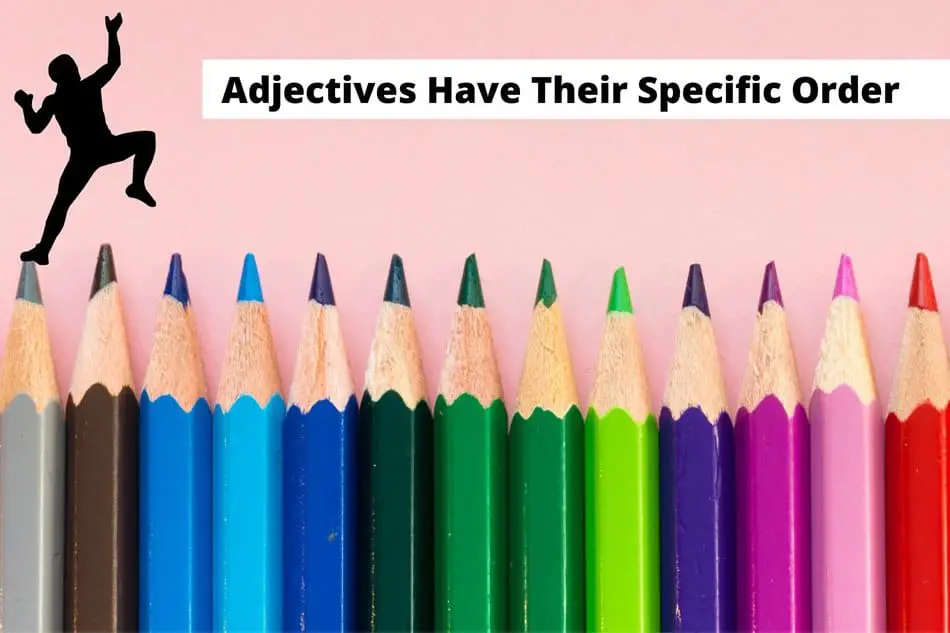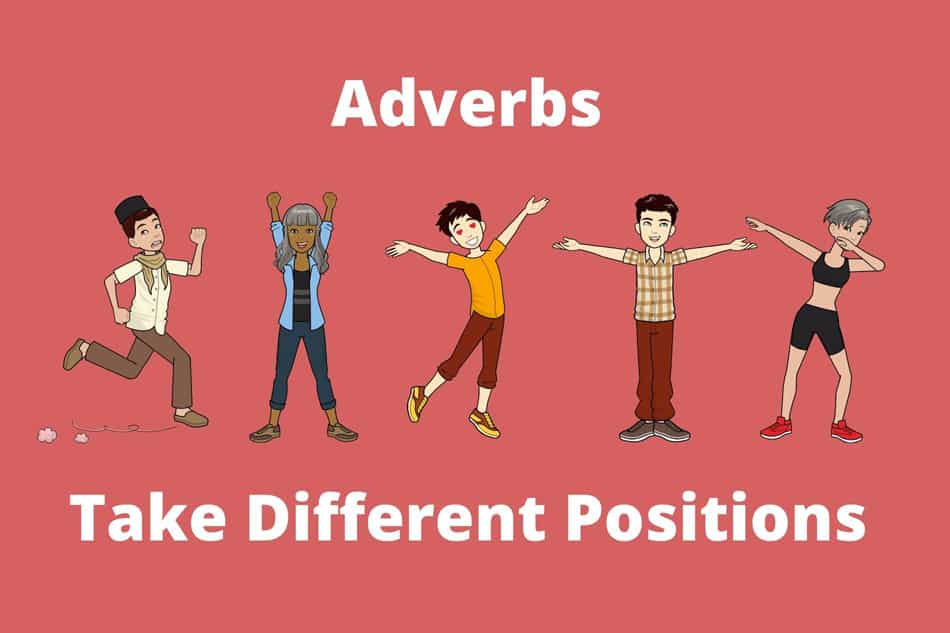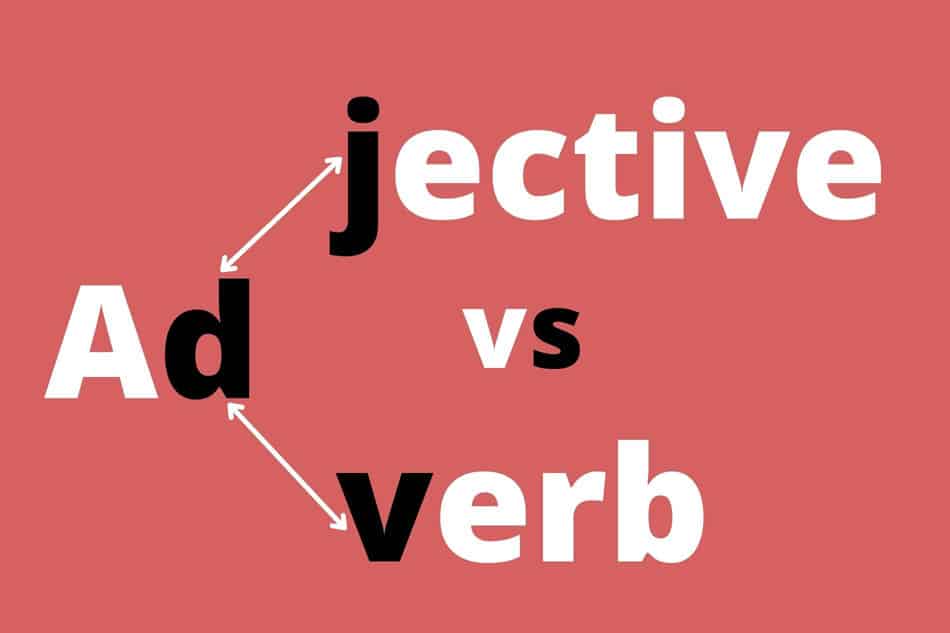The basic knowledge about adjectives and adverbs is that adjectives modify nouns, and adverbs modify verbs. But is this all about them? Is there anything more than just the basics? Of course, there is. To learn adjectives and adverbs properly, you should not only focus on definitions and examples of them individually but also on the differences between them.
Adjectives are words that provide us with information about nouns or pronouns, whereas adverbs tell us something about verbs, adjectives, or other adverbs. Adjectives provide answers to inquiries such as “Which?” “How many?” “What kind?” while adverbs respond to queries like “How,” “When,” “Where,” and “How much.”
Try The Blue Book of Grammar and Punctuation: An Easy-to-Use Guide with Clear Rules, Real-World Examples, and Reproducible Quizzes (Amazon Link) to understand the major rules and subtle guidelines of English grammar and usage. This best-seller includes easy-to-understand rules, abundant examples, dozens of reproducible quizzes, and pre and post tests for middle and high schoolers, college students, ESL students, homeschoolers, and more.
To give you a clear idea about the differences between adjectives and adverbs, let me draw a table showing the differences considering different parameters. However, in the latter part of the post, I will explain the table in detail and discuss some other important issues with examples related to adjectives and adverbs individually.
Differences between Adjectives and Adverbs
| Adjectives | Adverbs |
|---|---|
| The adjective is a word that tells us something about a noun or a pronoun. | The adverb is a word that tells us something about a verb or anything except noun or pronoun. |
| Adjectives can be modified by adverbs. | Adverbs cannot be modified by adjectives. |
| In a sentence, an adjective can be placed before a noun. | In a sentence, an adverb can be placed in different positions. |
| An adjective answers the following questions: Which? How many? What kind? | An adverb answers the following questions: When? How? Where? How much? How often? To what extent? |
| There is no usual pattern of adjectives compared to the adverbs. However, there are a few adjectives that end in “ly.” Friendly Early Hourly etc. | Adverbs mostly end in “ly.” Slowly Nicely Carefully etc. |
| Adjectives may have different forms of degrees (comparative/superlative) | Adverbs also may have various forms of degrees (comparative/superlative) |
| There are different types of adjectives: Attributive adjective Predicative adjective Verbal adjective Adjective of quality Interrogative adjective Determiners: 1. Articles 2. Demonstratives 3. Possessives 4. Quantifiers 5. Numerals | There are different types of adverbs: Adverb of manner Adverbs of time Adverb of place Adverbs of frequency Adverbs of affirmation and negation Adverb of degree Adverb of reason/purpose Adverb of direction Interrogative adverb Relative adverb Intensifier |
| A sentence may have more than one adjective. The adjective has its specific order: Determiners Central adjectives Colour adjectives Inherent characteristics Noun adjectives | There can be more than one adverb in a sentence. The adverb has its specific order too: Adverbs of manner Adverbs of place Adverbs of frequency Adverbs of time Adverbs of purpose |
Now, let’s discuss adjectives and adverbs in detail with examples individually. I will show the definition, characteristics, classification, and examples of each kind of adjective first. Then will move to adverbs.
Definition of Adjectives and Their Characteristics
Words that modify nouns or pronouns are called adjectives. In other words, adjectives give us information or tell us something about nouns or pronouns. For example;
Example 1: Rameem is a good boy. (“Good” modifies the noun “boy.”)
Example 2: His brother is poor. (The word “poor” gives information about the subject/noun “brother.”)
To identify and use adjectives properly, we must know the different characteristics of Adjectives. Let’s find the salient characteristics of adjectives.
Adjectives Can Be Used before Nouns
An adjective can qualify or modify a noun being placed before a noun. As such, adjectives are used attributively before nouns, they are also defined as attributive adjectives.
Example 1: This is a big house. (The attribute “big” is placed before the noun “house.”)
Example 2: Those young players played well. (The attribute “young” is placed before the noun “players.”)
An Adjective Can Be Used after Linking Verbs
Adjectives can be used after linking verbs as compliments. As these types of adjectives are used predicatively as compliments, they are also known as predicative adjectives.
Example 1: This house is big. (“Big” is a compliment for the noun “house,” placed after the linking verb “is.”)
Example 2: Those players were young. (“Young” is a compliment for the noun “players,” placed after the linking verb “were.”)
Note: Most of the adjectives in English can be used both attributively and predicatively. But some adjectives can only be used either as attributives or predicatives. Here are the exclusive adjectives.
| Attributive adjectives | Predicative adjectives |
|---|---|
| Chief, principal, drunken, elder, lighted, little, main, etc. | Afraid, asleep, alike, alive, alone, ashamed, content, glad, ill, ready, sorry, sure, well, etc. |
Adjectives Can Be Used after Nouns or Pronouns
An adjective can be used after a noun or pronoun as a compliment when that noun or pronoun acts as an object in a sentence.
Example 1: I want my coffee strong. (The compliment “strong” is used after the noun “coffee.”)
Example 2: The doctor declared him dead. (The adjective “dead” is used after the pronoun “him.”)
An Adjective Can Be Modified by Adverbs
Adverbs are commonly used to modify adjectives. An adjective can take an adverb to provide extra information about the adjective of the noun in a sentence.
Example 1: This is a very beautiful place. (The word “very” is an adverb here that modifies the adjective “beautiful.”)
Example 2: He is extremely powerful. ( The word “extremely” is an adverb in this sentence that modifies the adjective “powerful.”)
Adjectives Can Be Used in Comparative or Superlative Forms
Adjectives have a strong connection with the degree. We know that there can be three degrees of adjectives: positive, comparative, superlative. A positive degree is a typical adjective form, while the other two are used to show comparisons. Let’s see some examples of how adjectives are used in comparative and superlative forms.
Example 1: Russel is taller than Rubel. (The word “taller” is a comparative degree used as an adjective to determine the difference between Rusell and Rubel regarding their height.)
Note: We use the comparative degree to draw a comparison between the two items or people.
Example 2: Russel is the tallest boy in the class. (The word “tallest” is a superlative degree used as an adjective to determine the tallest person among all the boys in the class.)
Note: We use the superlative degree to draw a comparison among more than two items or people.
Adjectives Are Used as Determiners
Determiners are considered a special kind of adjective in modern English grammar. A determiner always comes before a noun to determine or clarify the meaning of that noun. There can be different categories of determiners. I will briefly discuss different types of determiners here. If you like to find a detailed discussion on determiners, you can read An Ultimate Guide to Using Determiners in a Sentence.
The most common categories of adjectives that we use as determiners in sentences are as follows:
Articles
An article is a small word placed before a noun to determine whether the noun refers to something definite or indefinite. There are three articles in English: a, an, and the. They can play a significant role in determining the standard of a noun in a sentence. Let’s see some examples.
Example 1: I would like to have a sandwich.
Example 2: I will buy an umbrella for you tomorrow.
Example 3: The students of section B organized the event.
Note: “A” and “an” are the two indefinite articles used before singular nouns only. On the other hand, “the” is the only definite article used before all kinds of nouns. There are different rules for using articles in sentences. Here I come up with A Complete Guide to Using Articles in English Grammar. I have discussed a number of rules for using articles with a variety of examples here.
Demonstratives
We use words like this, that, those, and these to identify whether something is near the speaker or at a distance. These four words are called demonstratives or demonstratives pronouns. They are commonly used as determiners in English.
Example 1: This perfume is good.
Example 2: That was a nice day.
Example 3: These are my books.
Example 4: Those clothes are dirty.
Note: “This” and “that” are used before singular nouns, while the other two—“these” and “those” are used before plural nouns. To clarify the idea of demonstratives and learn how to use them appropriately in a sentence, click here.
Possessives
Words that we use as determiners to specify ownership or possession are called possessive determiners. They are always used before nouns. My, our, your, its, his, her, there are the possessive determiners. Let’s see some example sentences with possessive determiners.
Example 1: My sister is an athlete.
Example 2: This is his room.
Example 3: What is your name?
Caution! Do not get confused between possessive determiners and possessive pronouns. To know the differences between possessive determiners and possessive pronouns in more detail, check my comparison table on Possessive Determiners VS Possessive Pronouns.
Numerals
Determiners that talk about numbers, amounts, ranks, and sequences are called numerals. Numerals can be of two types—cardinal and ordinal. Cardinal numbers/numerals give us information about the amount or number of any noun. The ordinal numbers/numerals provide us with information about the order, rank, or sequence of a noun.
Example 1: My sister has two kids. (“Two” is the cardinal number)
Example 2: She is the second child of my sister. (“Second” is the ordinal number)
To easily understand cardinal and ordinal numbers in English, I have drawn a chart showing Different Types of Numbers in English. You can also find an in-depth discussion on the use of numbers as determiners here.
Quantifiers
Quantifiers are a kind of determiners used to indicate the quantity of a noun. They are very common types of determiners used before nouns. Some, any, many, several, each, both, etc., are some examples of commonly used quantifiers.
Example 1: He needs some money.
Example 2: Do you have any confusion regarding this matter?
Example 3: I have many friends.
Note: There are different kinds of quantifiers. They are used differently to show large quantities, Small quantities, Undefined quantities, and Sufficient amounts. To know about them thoroughly and learn how to use quantifiers as a determiner, click here.
More About Determiners
Remember! The types of determiners are not limited to the types that I have discussed above. There are some other kinds of determiners that I have already written about in one of my earlier posts. That post includes some other types of determiners that I haven’t discussed here. Here are the links:
- How to Use Distributives as a Determiner
- How to Use Determiners to Show Differences
- When and How to Use Pre-determiners
Adjectives Have Their Specific Order

In a sentence, there can be more than one adjective. In that case, the question of order comes. The order in which more than one adjectives come before a noun is called adjective order. The order of adjectives is typically maintained in the following way.
- Determiners: This, a, the, many, my, that, etc.
- Central adjectives: Beautiful, flat, smooth, etc.
- Colour adjectives: Green, black, red, etc.
- Inherent characteristics: Old, heavy distant, etc.
- Noun adjectives: Mangrove forest, wooden furniture, metal device, etc.
Example: I, along with my friends, visited this beautiful green old mangrove forest (noun) last year.

Definition of Adverbs and Their Characteristics
Words that usually modify verbs are called adverbs. They tell us about the time, place, and manner of the verb. In other words, Adverbs provide us with information about when, where, and how something happens. Besides, an adverb can also modify adjectives and other adverbs in a sentence. Such adverbs are also called intensifiers.
Example 1: Raqib went home. (Adverb of place)
Example 2: She arrived early. (Adverb of time)
Example 3: They played well. (Adverb of manner)
To identify and learn the proper use of adverbs, we must know the different characteristics of Adverbs. Let’s find the salient features of adverbs.
Adverbs Can Be Put in Different Positions in a Sentence

As adverbs can modify verbs, adjectives, and even adverbs, they can take different positions in a sentence according to the necessity. That means an adverb can be placed at the beginning, middle, or end of a clause or a sentence.
Example 1: Suddenly, he entered the hall. (Adverb at the beginning)
Example 2: We will walk down the street. (Adverb in the middle)
Example 3: What are you planning to do now? (Adverb at the end)
Note: When an adverb occurs at the beginning of a sentence, it is called adverb preposing.
Different Kinds of Adverbs
Identifying adverbs correctly sometimes becomes more difficult compared to identifying adjectives. This happens because adverbs can modify verbs, adjectives, and adverbs, whereas adjectives can only modify nouns.
Now I will discuss different kinds of adverbs with examples of their use in detail. You already noticed that I introduced more than ten kinds of adverbs in the comparison table at the beginning of this article. Here, I present another table discussing the main types of adverbs in English.
| Adverb Type | Definition/Function | Example Sentence |
|---|---|---|
| Adverb of manner | Adverbs which usually answer the question “how?” | Bolt runs fast. |
| Adverb of time | Adverbs which usually answer the question “When?” | Ricky has arrived now. |
| Adverb of place | Adverbs which usually answer the question “where?” | They went home yesterday. |
| Adverb of frequency | Adverbs which usually answer the question, “how often?” | He usually goes shopping alone. |
| Adverbs of affirmation and negation | Adverbs that declare something as true or give a negative statement. Affirmative words: Absolutely, clearly, truly, definitely, exactly, etc. Negative words: Nothing, nowhere, no, not, etc. | His garden is very clearly visible from my room. (Affirmation) His garden is not visible from my space. (Negation) |
| Adverb of degree | Adverbs that indicate extent, degree, or amount. | Rani works very hard. |
| Adverb of reason/purpose | Adverbs which usually answer the question “Why?” | I think, therefore, I exist. |
| Adverb of direction | Adverbs that indicate directions. | Come back, please. |
| Interrogative adverb | Adverbs which are used to ask questions. There are four interrogative adverbs—why, where, when, and how. | Where is the key? |
| Relative adverb | Adverbs which are used to join clauses or sentences usually. There are three relative adverbs—where, when, and why. | The restaurant where we had our lunch yesterday is not open today. |
| Intensifier | Adverbs which usually precede and modify adjectives or other adverbs. | You got quite a good idea. |
Adverbs Have Their Specific Order
We already know that an adverb can take different positions in a sentence, and there can be more than one adverb in a sentence. Thus, to avoid confusion, it is necessary to maintain a general order while using adverbs in a sentence.
The order that determines the sequence of appearance of different adverbs in a sentence is called the order of adverbs. To many grammarians, it is also considered the royal order of adverbs.
- Adverbs of manner.
- Adverbs of place.
- Adverbs of frequency.
- Adverbs of time.
- Adverbs of purpose.
Example: I run (verb) fast on the footpath every afternoon after 5 PM so that I can reduce my fat.

Note: Getting five adverbs in a row is not common, but you may commonly have two or three adverbs in a row as modifiers. So, if there is more than one adverb in a sentence, try to follow the above order to avoid sounding unnatural.
In Conclusion
We all have come to know that both adjectives and adverbs modify another word class. It may seem difficult for us to identify adjectives and adverbs in sentences.
One of the easiest ways to identify an adverb is that Adverbs usually end in -ly. Yet, some adjectives also end in -ly, such as hourly, weekly, monthly, and yearly.
The key difference between adjectives and adverbs lies in their function. If any word modifies a noun or, undoubtedly, it is an adjective. On the other hand, if a word modifies anything except a noun or pronoun, it is an adverb.
I hope this post will help you to learn everything about adjectives and adverbs.
Thanks for reading.
Happy learning!





